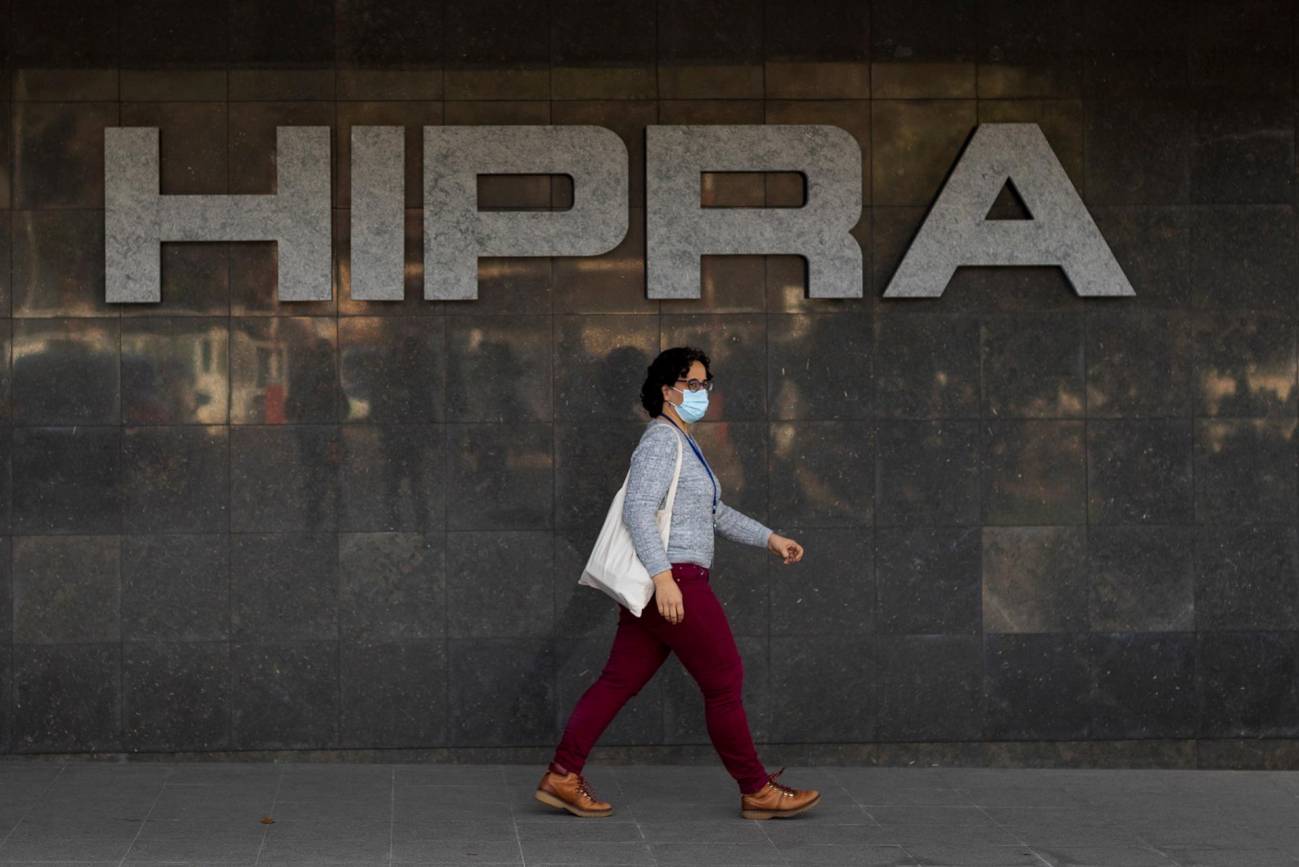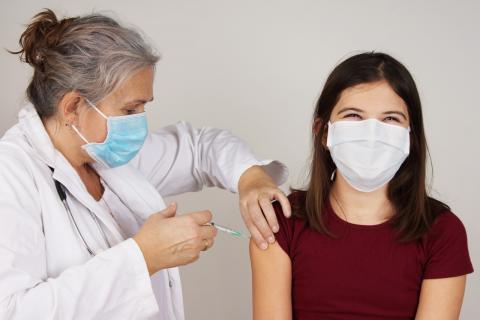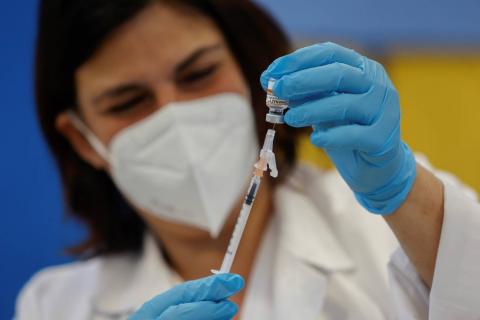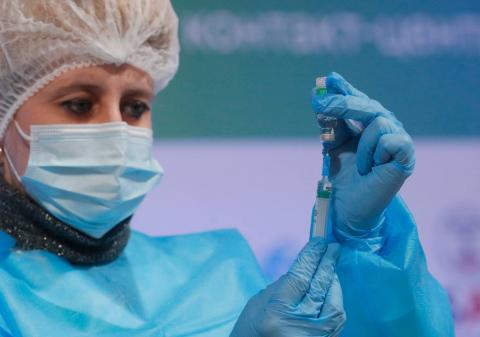On 29 March, the EMA began the continuous evaluation of the covid-19 vaccine developed by the Girona-based company Hipra, the first vaccine developed in Spain. In this test, rolling review in the jargon, the efficacy, safety and quality data of the vaccine are analysed as they are generated. It is the last step before marketing authorisation by the EMA.
What the Hipra vaccine looks like
It consists of a synthetic protein, i.e. manufactured in the laboratory, which is injected together with a compound called an adjuvant. Together, protein and adjuvant trigger the body's defensive response to a SARS-CoV-2 virus infection.
How do they do it? The synthetic protein is a copy of a fragment of one of the proteins that the virus has in its envelope; specifically, it is the protein that allows the virus to infect human cells. In other words, the vaccine protein is a copy of the key with which the virus enters cells. When the human immune system detects it, it realises that it is a foreign protein and develops defences against it.
If the real virus then arrives, the defences will recognise its key protein and react faster than if they had never seen it before. That defensive response will stop the infection.
For whom it will be indicated in Spain
Hipra's vaccine has been evaluated as a booster dose for people who have received the first vaccination with a different vaccine. The company itself confirms that, if approved, it could be used as a third or fourth dose.
Can be stored at refrigerator temperature
Unlike messenger RNA vaccines, which are stored at around -70°C, Hipra's vaccine (like Novavax's) can be stored at between 2°C and 8°C, i.e. in conventional refrigerators, which makes it easy to store and transport.
Chronology of clinical trials
Hipra's vaccine was approved by AEMPS (Agencia Española de Medicamentos y Productos Sanitarios) for a Phase III clinical trial on 1 February 2022 as a booster dose for people on the full schedule with a different vaccine. Previous trials had demonstrated a good safety profile and adequate efficacy.
On 11 March 2022, the AEMPS authorised a second Phase IIb clinical trial to see how it performs against omicron in volunteers who have received two doses of Vaxzevria (AstraZeneca) and a booster of Hipra compared with those who have been vaccinated with two doses of Vaxzevria and Comirnaty (BioNTech/Pfizer). Previously, in a phase IIb trial, authorised on 15 November 2021, the study was in volunteers who had been given Comirnaty. The first clinical trial was authorised on 11 August 2021.
How it behaves in the face of new variants
According to a press release issued by the company itself, the booster with Hipra's vaccine in those who had previously received the Pfizer-BioNTech vaccine generates a "potent neutralising antibody response against all the variants studied: Wuhan, beta, delta and omicron (BA.1 ) at 14 and 98 days, with these increases being statistically higher than those obtained with the Pfizer-BioNTech booster dose at 98 days against beta, delta and omicron (BA.1), and at 14 days against beta and omicron (BA.1)". According to data from the clinical trial that began in 2021, published in preprint form and not yet peer-reviewed, no significant differences in protection against infection were found between those boosted with Hipra's vaccine and those given Pfizer-BioNtech's vaccine. At the time of the trial, the circulating variants were both delta and omicron (BA.1).
With respect to the currently circulating major variants (omicron BA.4 and BA.5), the press release states that an increase in neutralising antibodies was observed in a subgroup of patients who had previously been vaccinated with Moderna's vaccine. However, it is not yet possible to establish from these data the level of protection it would confer and how it would differ from booster schedules with other vaccines.
How does it differ from vaccines already available in Spain?
Both messenger RNA vaccines (BioNTech/Pfizer and Moderna) and those using a viral vector (AstraZeneca and J&J) work because they introduce into the vaccinated person's cells the genetic instructions needed to make the protein that triggers the immune system's response.
But Hipra's vaccine, like Novavax's, injects that protein directly, along with an adjuvant (a compound that further stimulates the human defence system).
Is it a new technology?
The recombinant protein technology on which Hipra's vaccine is based has been used for years with great success in other vaccines, such as hepatitis B, influenza and human papillomavirus (HPV).
What do 'recombinant' and 'dimer' mean?
Hipra defines its vaccine as "a recombinant adjuvanted protein based on a receptor binding domain (RBD) fusion heterodimer containing the B.1.1.7 (Alpha) and B. 1.351 (Beta) variants of SARS-CoV-2".
"Recombinant" means that it is a protein obtained from artificial DNA, constructed in the laboratory with the desired characteristics. In this case the DNA is a copy of the virus's own DNA - not the entire DNA of the virus, just the part that orders the synthesis of the protein we want.
But the recombinant HIPRA protein is a dimer, which means that it is actually two proteins joined together: they reproduce the proteins that two different variants of the virus, alpha and beta, use to enter cells.
How has this vaccine been funded?
The development of this vaccine has been partly financed by public funds. As reported by the Ministry of Science and Innovation, Hipra received almost three million euros in 2020, as well as scientific and regulatory advice from the Ministry of Science and Innovation and the Ministry of Health. In October 2021, public support of nearly 15 million euros was also announced for phase IIb/III clinical trials.
What exactly is a rolling review?
A rolling review is a regulatory tool used by the EMA to accelerate the assessment of a promising medicine or vaccine during a public health emergency. Normally, all data on the efficacy, safety and quality of a medicine or vaccine, as well as all necessary documents, must be ready at the start of the assessment in a formal marketing authorisation application. In the case of a continuing review, the EMA's Committee for Medicinal Products for Human Use (CHMP) reviews data as they become available from ongoing studies. Once the CHMP decides that sufficient data are available, the company can submit a formal application. By reviewing the data as they become available, the CHMP can reach an earlier opinion on the authorisation of the medicine.
What are Hipra's origins?
Hipra is a pharmaceutical company specialising in preventive medicines for animal and human health. The company dates its birth to 1971, with the purchase of "a small laboratory in Madrid founded in 1954, called Hipra (after the surnames of its former creators: Hidalgo and Prada)", and its move to Amer (Girona), its current headquarters.
It currently has subsidiaries in 40 countries; three research centres; and six production plants in Europe and America. It distributes its products (mostly veterinary vaccines) all over the world. In the last 10 years, it has brought 22 new veterinary vaccines to market. In 2021 it created its Human Health Division to develop a vaccine against covid-19. It claims to devote 10% of its turnover to R&D activities.




